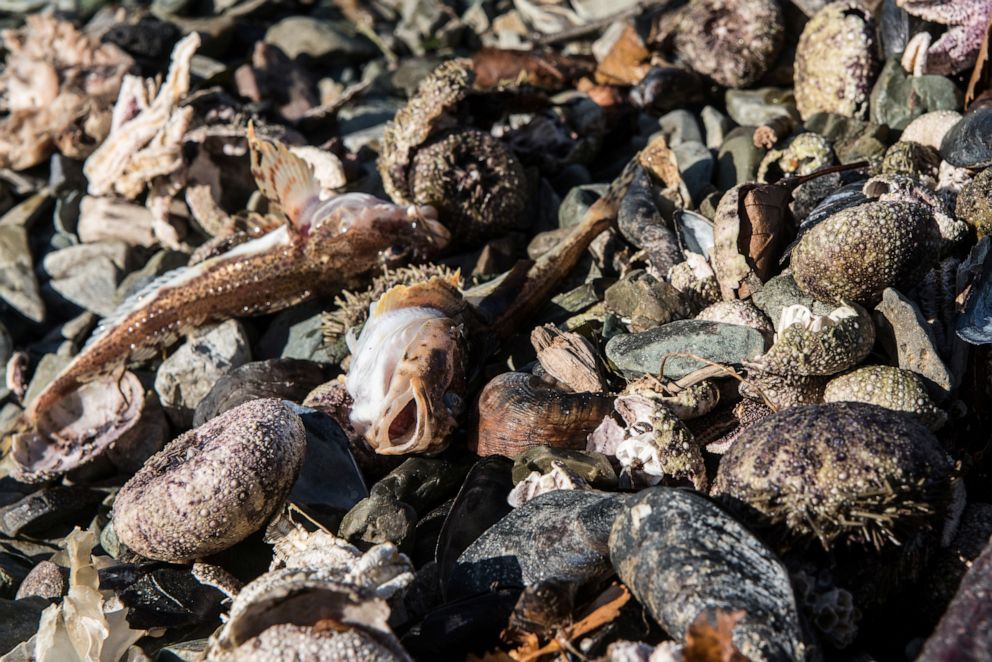Hello everyone!
I have been focusing on various pollutions and their effects on birds. Now I would like to move on and talk about the effects on marine life.
Recently, I read an article by Alec Luhn about the massive marine die-off in Russia. After much investigation, it is believed that this was a result of an unprecedented algal bloom that decimated bottom-dwelling sea-life causing a rippling effect. Photos of thousands of dead sea creatures washing up on a beach in Kamchatka, a peninsula across the ocean from Alaska, went viral at the beginning of October. 

Not only has the problem spread around the peninsula, but it has also gone up the food chain. Thousand of dead fish, mostly bottom feeders were found on the shore and several brown bears suffered severe food poisoning from eating them.
Based on data released by Russian environmental officials, the results found excess amounts of phosphate ion, iron, and phenol in the areas where the poisoned animals were discovered. The water of the bay was examined by scientists from a local nature reserve and they found that 95% of sea life to the depth of 10 to 15 meters was dead (Lobzina, 2020). Scientists flew over the coast and spotted swaths of yellow, green, and red water which was suggestive of algal blooms. Yellowish foam was seen floating near the coast. This microscopic phytoplankton emits toxins and depletes oxygen levels in the water as they die, they begin decomposing on the seafloor which could explain the high mortality of bottom-dwellers (Luhn, 2020).
Due to the topography, there exist perfect spawning grounds for 6 species of salmon which in turn is a source of food for brown bears, spotted seals, orcas, and the Steller’s sea eagles and sea lions. The salmon, grey whales, and the critically endangered right whales often feed on the zooplankton. Around this time of the year, coho salmon are coming in to head upstream to spawn. If the concentration of the algal bloom is large enough, they would likely to affected and possibly die from acute exposure. To date, much more sea urchins have died which is raising concern about the survival of otter as they rely on sea urchins as a staple (Luhn, 2020). This could really affect the endangered and vulnerable species negatively.
Though the reason for the algal bloom is not truly known yet, whether it is climate change and the warmer waters or was its leakage from the dumpsite where tons of pesticides and poisonous chemicals and stores or even a combination of factors. What is clear is that authorities should keep investigating signs of chemical pollution which is a more immediate fix than trying to mitigate the primary cause behind an expected increase in red tides. With climate change and warmer waters in play, more and better water quality monitoring should be employed such that we can be more prepared for such events and try to decrease the impact on these marine species.
That brings me to the end of this post.
See you guys soon!
References
Lobzina, A. (2020, October 11). Mysterious mass die-off on Russia’s eastern coast has scientists searching for answers. Retrieved October 30, 2020, from https://abcnews.go.com/International/mysterious-mass-die-off-russias-eastern-coast-scientists/story?id=73544331
Luhn, A. (2020, October 16). Massive marine die-off in Russia could threaten endangered sea otters, other vulnerable species. Retrieved October 30, 2020, from https://www.nationalgeographic.com/animals/2020/10/algae-bloom-kills-marine-life-kamchatka-peninsula/








